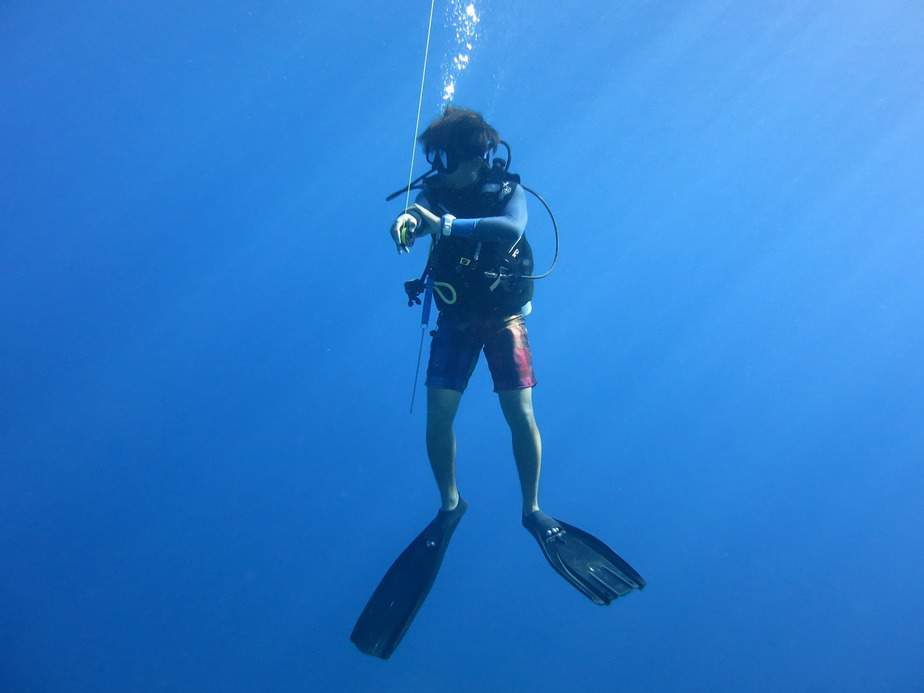If you are a newly certified diver, don’t be in a rush to buy a full set of brand new equipment. Instead, consider renting in the meantime, or buying used scuba gear. Even experienced divers will often buy used gear as a replacement or a backup.
The issue with buying used gear, however, is that it takes some effort to find good deals and there is a possibility of buying a dud. That said, you can also luck out and get great gear for 30-50% off its retail price, perhaps more. With enough experience, all of your secondhand purchases can be like the latter instead of the former.
So where does one go about buying used scuba gear? If you’re part of a dive club, put out the word that you’re looking to buy used gear. Otherwise, you can try the usual marketplaces like eBay, Amazon, Craigslist, and Facebook Marketplace. You can also buy used rental gear from dive shops, but these are likely to have been abused by careless customers. When you’re doing a private deal such as through Craigslist or at a garage sale, you have the opportunity to inspect the gear in person and negotiate a better deal.
As for how to find the best deals on used gear – that is the million dollar question, isn’t it? There are specific things you should check for each piece of scuba equipment you plan to buy. In order to know if a piece of dive equipment is good, you need to know how to properly maintain it yourself. Otherwise, you don’t know what you’re looking at. We recommend taking formal lessons, such as PADI’s Equipment Specialist course, to understand how your dive equipment functions.
To give you an idea of the kinds of things you should be looking for when buying used scuba gear, here are a bunch of examples.
Are you buying or selling used dive gear?

Even though buying and selling scuba gear serves two completely different purposes, there is actually a lot of overlap in terms of knowledge required in order to maximize what you can buy or to increase selling potential of the scuba equipment in question.
Plus, you might be selling a piece of dive equipment so that you can upgrade to a newer model, which means you’ll be scouring the market soon enough. Another strategy you could use is to buy new with the intention of selling it later to recoup some of the buying costs, so you will essentially get the best of both worlds – the guarantee of usability and safety while getting it at a “reduced” price.
As such, even though this article has more of a focus on buying used scuba gear, the tips provided can also be very beneficial for those looking to sell as well. By knowing how to maintain your gear, as a buyer, you’ll know how to spot gear that is still in good condition, and as a seller, you can charge a higher price when selling your well-maintained equipment.
If you’re selling used scuba gear, we have written some tips on how you can better market your dive gear in another article.
How to buy a used buoyancy control device (BCD)
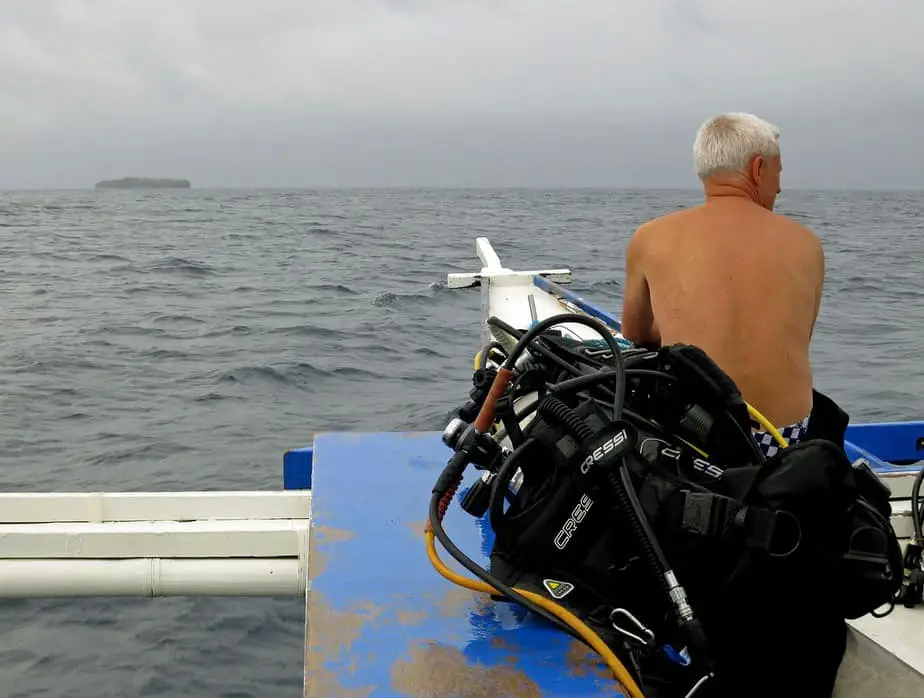
BCDs are designed to take a beating, but that doesn’t mean you should abuse it, nor should you use one that looks like it has been abused. Buying a used BCD is not so different from looking for a piece of rental gear.
The first thing you should do is a quick overview of the general condition of the BCD. Don’t worry if the color looks a bit faded; equipment that has been used in a pool will become faded due to the chlorine bleaching it faster than the sun, and colors will fade over time regardless.
Next, check that the connectors and straps are functional and not frayed. Inspect the ribbing around the edges of the bladders for damage. Typically, the area with the most wear and tear on a BCD is around the naval area if it has been in constant use.
Continuing on, double check the straps again in case you missed any damage. Wear the vest, try adjusting the straps, and determine if the fit is comfortable for you. Try moving around and figure out if you can do the necessary movements, particularly around the chest area.
Inflate the BCD fully while wearing it and see if it still feels comfortable to wear. Test out each of the release valves to ensure they are working properly. Leave the BCD fully inflated to see if the bladder leaks air
If the BCD has integrated weight pockets, check that the pouches are in good condition and that they can release the weights easily.
Before doing this next step, first fully deflate the BCD. Then, remove the caps over the valves and look inside of the bladders. Keep an eye out for oil, mold, or both in the bladders. Their presence is not a good sign because they can weaken the bladders. However, some oil or mold may be acceptable. If the opening is too small to stick a finger in, use a cotton bud to swap the inside to confirm.
After purchasing a used BCD, I recommend getting it serviced. The BCD, like the regulator and scuba tank, is life-support equipment and should not be taken lightly. You must be absolutely sure it’s safe to use. You should also use a BCD conditioner on it before and after your first dive.
How to buy a used wetsuit
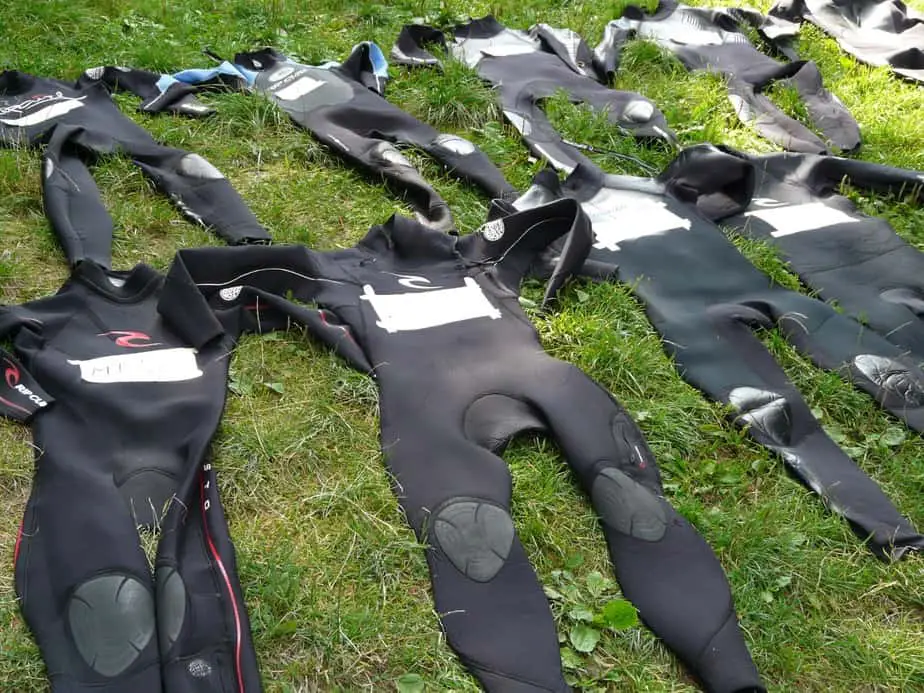
The mask, fins, snorkel, and wetsuit are among the first things a new scuba diver will buy because of how affordable they are relative to the cost of other scuba diving equipment.
Wetsuits in particular are abundant in the second-hand market due to their use in other water sports other than scuba diving. Keep in mind there are subtle differences to a scuba diving wetsuit vs. a surfing wetsuit.
While the goal of any wetsuit is to keep you insulated, scuba wetsuits tend to be thicker and can resist the water pressure at depth at the expense of having less flexibility. On the other hand, surfing wetsuits are more focused on flexibility so surfers can do more complex movements, but it is not designed to withstand the pressure at depth. In other words, you need to buy a wetsuit specifically for scuba diving.
Next, fit is absolutely crucial for a wetsuit. You want one that is snug but not so restrictive that it cuts off your circulation. Also, while the wetsuit should be tight, it’s totally normal for a wetsuit to let water in. The problem is when too much water can enter too quickly, and that’s when you know you have a bad fit.
When buying a used wetsuit, pay attention to any creases from being improperly hung or folded; they should be hung using a wetsuit hanger. Check that the zippers are still functional and that they zip up and down smoothly. Look for any flattened areas which indicate that a heavy weight was placed on it at some point. If you feel that the neoprene seems to be thin, it may not provide as much insulation or buoyancy as before.
How to buy a used dive computer
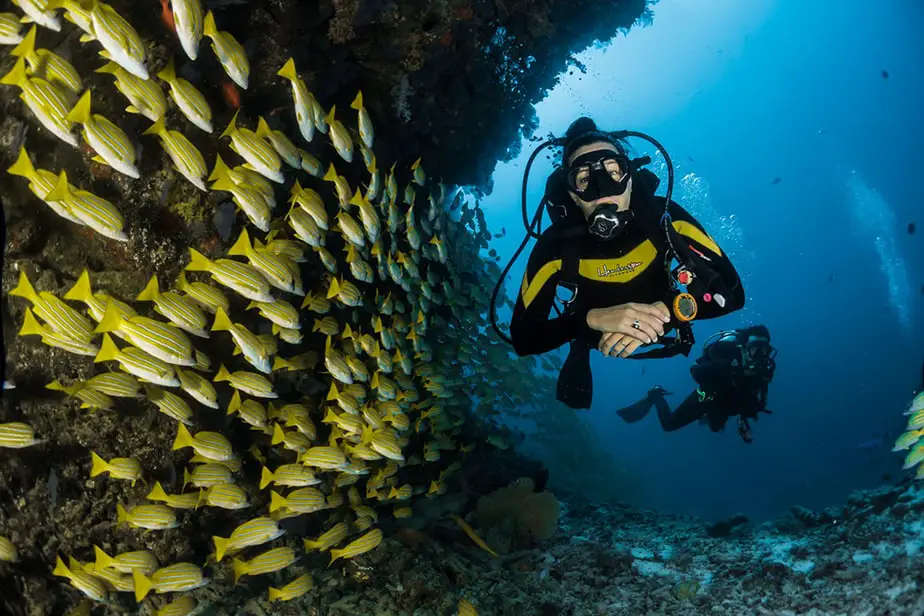
You might think that if a dive computer turns on and is functional, that it is safe to use. Unfortunately, unless you test it underwater you don’t know if it is still waterproof, and also the software might be completely outdated at this point.
Modern dive computers will have newer tracking features such as ascent rates, half stops, multiple alarms, etc., that older dive computers do not have.
Additionally, decompression theories and modelling will continue to improve, meaning the algorithms will continue to be more accurate compared to before. Furthermore, certain sensors such as the pressure transducer can go bad, and unless you actually dive with the computer, you won’t know it’s malfunctioning.
With how affordable entry level dive computers are, and even some decent midrange dive computers are under $500 (high end ones can cost over $1,000), you should seriously consider buying new when it comes to getting a dive computer.
How to buy a used regulator
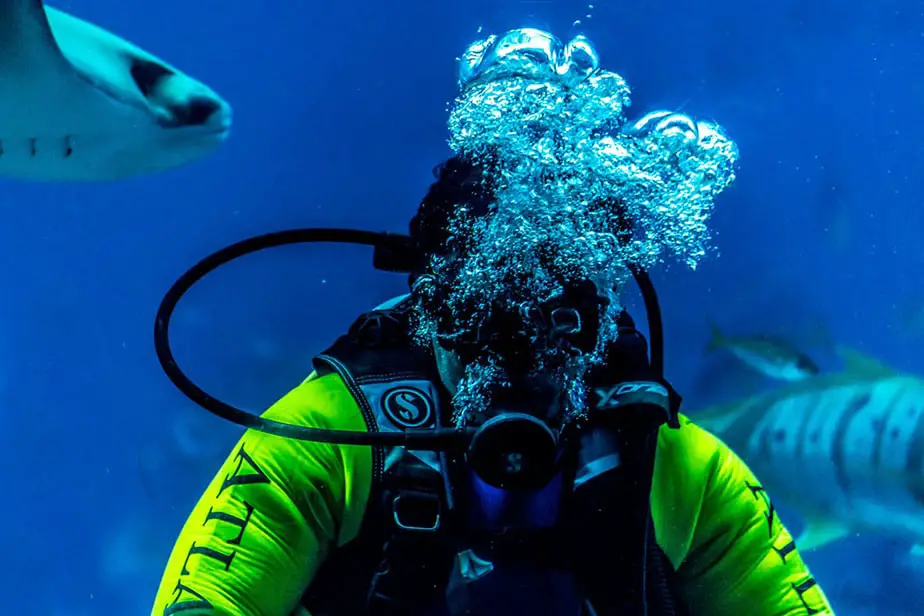
A regulator is perhaps the most difficult to judge if you are getting your money’s worth buying used. It’s probably the most important and expensive piece you will buy, so your standards for one should be high.
Once again, do an overall inspection of the regulator. Look for any signs of obvious damage – if you find any, then pass on this one. In particular, keep an eye out for dry rot or cuts. Check that the fittings are all connected properly. A bad hose can cost well over $100 to replace, an expense you need to keep in mind when buying.
If possible, ask to bring the regulator to a dive shop so a technician can run a bench test on it before you buy. Bench tests are not expensive, and you can also verify the retail price of the regulator while you’re at it. If possible, connect the regulator to a tank and test it out as well.
Regulators are such critical items that you should get them serviced immediately after buying. This is an additional cost to keep in mind. Generally the parts are not expensive (assuming the parts can be found), but rather the labor is. Servicing a regulator is not something a diver can adequately do on their own; it requires special equipment and training to do it properly.
Should there be no obvious signs of damage, all the hoses are in good condition and the regulator seems to work with a tank, then you can save money on replacement parts but you’ll still need to get it serviced.
How to buy a used scuba tank
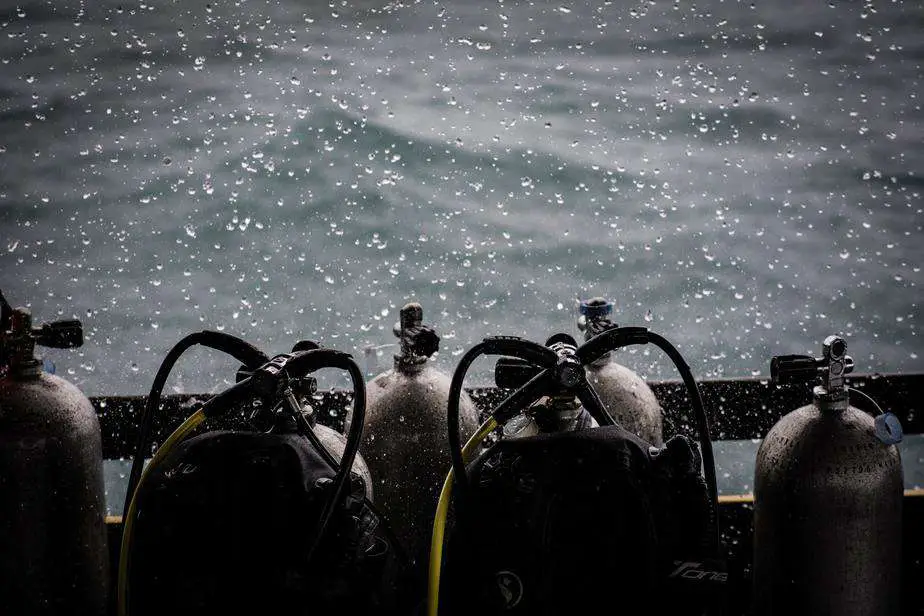
A scuba tank is yet another dive critical item that you must scrutinize it carefully before you purchase the tank.
A special warning – be careful not to buy any aluminum tanks made of 6351 aluminum alloy (typically from Luxfer and Walter Kidde). They are known to crack under pressure and have long since been recalled after a few devastating explosions happened. With that out of the way, let’s get started on what to look out for in a used tank.
First, do your own visual inspection by examining the tank top to bottom and looking for signs of corrosion or dents. A pressurized tank is always trying to reach equilibrium, even if that means violently exploding and shooting metal pieces everywhere. Rust and dents can significantly decrease the integrity of the material, which can put it at risk of exploding.
Look at the base by removing the boot. Look carefully at the neck where the valve is inserted. There could be dents, rust, discoloration, pitting, paint chipping, or any other signs of water damage that can be hidden in these areas. Steel tanks tend to fall victim to oxidation and degradation more easily than aluminum if not properly taken care of, but both tank types need to be carefully examined.
Scuba cylinders should be stored vertically, ideally in a secure scuba tank holder. When stored vertically, if there is moisture inside, it will trickle to the base of the tank where the material is at its thickest. A little bit of rust on the bottom of the tank can still be okay, but not on the thinner side walls. Tank holders also keep the tank from falling over and getting dented. They also can put some distance between the tank and a porous, moisture holding surface like cement.
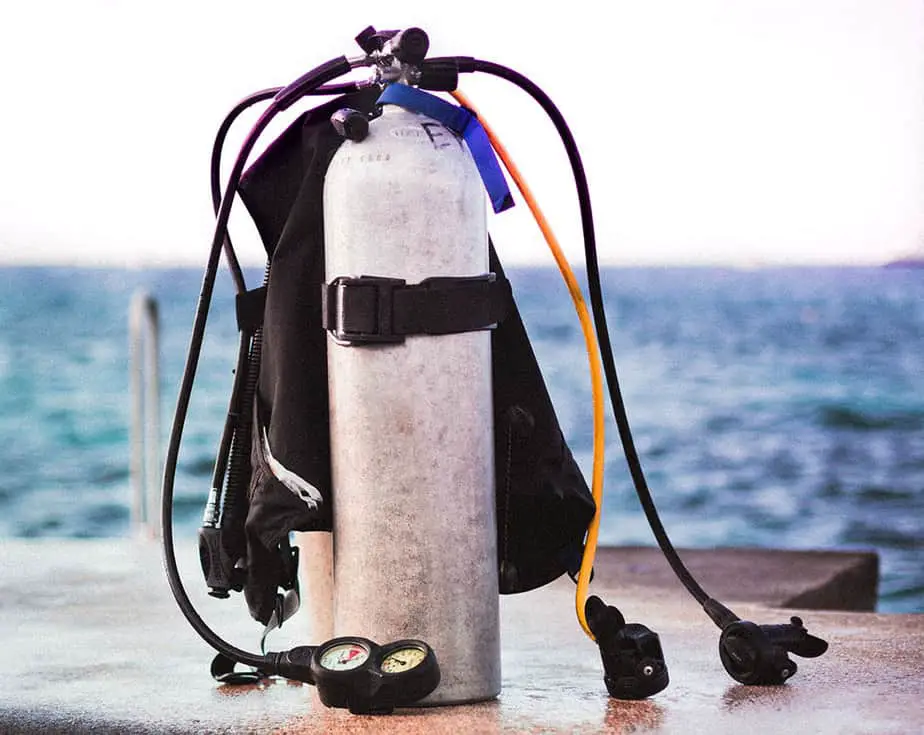
Second, does the air have any air in it? Tanks should not be stored completely empty or full. They should always have around 300 psi of air in it which keeps moisture out. If the tank is completely empty, check if there is any moisture and corrosion inside the tank. If you crack open the tank and some air expels, that’s a good sign. Otherwise, consider passing on that tank.
Third, look at the O-ring in the valve. Has it dried out or become distorted? Check for dings, scrapes, chips, or any other defects. A bad O-ring isn’t a dealbreaker; you can change it yourself easily. However, if you forget to check the O-ring, it can blow out at depth and leave you without any air underwater.
Fourth, check if the burst disk is patent? Burst disks are designed to burst if the tank has been overfilled. When the valves are cleaned, the burst disk will also be evaluated for patency or during the vis/hydro inspections. In the case of a burst disk, the valve needs to be examined and cleaned, and the burst disk replaced, which is another $30-40 in addition to the cost of the inspection.
Fifth, determine if the tank needs any inspections. Visual inspections (done by professionals with special training and gear, not done by you) are required at least once a year, and hydrostatic pressure tests are required every 5 years. The inspection date should be found on a sticker for the vis and a stamp for the hydro test somewhere on the tank. If it is expired, then dive shops won’t fill the tank because it isn’t safe to.
Failure to check for the inspection dates means you will need to pay for the inspection yourself instead of negotiating a better deal with the seller. Furthermore, there is no guarantee that the tank you’re buying will pass either of these two tests.
Thus, you could be out of money for both the used tank and the inspection fees, with little to gain from it. Actually, you could still end up scrapping it for the value of the metal (which is not very much), so it’s not a position you want to find yourself in.
On the other hand, if everything checks out, then congratulations. A scuba cylinder, when properly stored and maintained can last an entire lifetime, making it incredibly good for the value you paid for it.
Used scuba gear buying tips
Ask a lot of questions
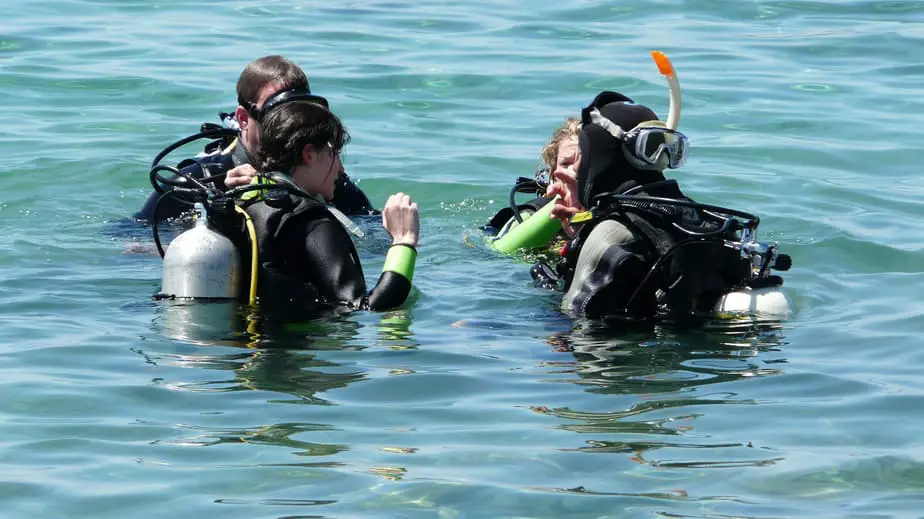
Seeing as how your scuba gear is your life support equipment, you really should do your due diligence when buying used dive gear. Read the listing very carefully, paying particular attention to things like how old the equipment is, how often it was used, what kind of environments it was used in, what was it last serviced, and so on.
You are trying to get a feel for the history of the equipment as well as its current condition. The product description and pictures/videos should help give you a sense of this. If there is anything you want clarified, don’t hesitate to reach out by sending a message or calling them if they provided their number.
If the seller is legitimate, it should be very easy for them to provide pertinent information and answer your questions. On the other hand, if you feel that the seller is being vague, or trying to avoid answering some of your questions, then it’s a sign that the seller is trying to sell a dud.
As part of a private sale like this, it’s not unusual to schedule a meeting so you can talk to the seller face-to-face and inspect the equipment. Here, you can ask even more questions, especially if you notice any imperfections in person. Again, if the seller seems unable to answer your questions or appears very pushy, then it’s a sign you might be buying a dud.
Is the equipment obsolete?
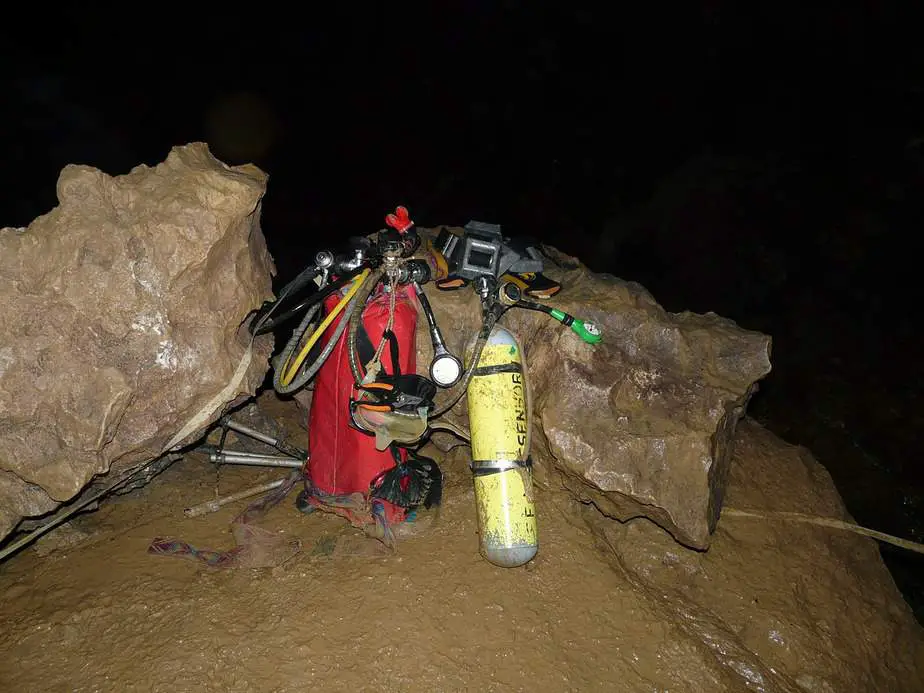
Depending on how old the equipment you’re buying is, it could be anywhere from a few months old, to a few years old, or even a few decades old. If it is over 10 years old, it’s highly possible that the manufacturer has gone out of business, or that that specific model has parts that are not easily available.
In the case of a scuba tank, a decades old steel tank may still be perfectly usable. However, the same might not be true for a dive computer which may have obsolete software or functionality.
Do not be swayed by sellers who claim that, because they rarely used a piece of equipment over the years, that its condition is still good. Keep in mind that gear should be serviced whether it has been used or not. Also, certain components will oxidize and become brittle over time, such as O-rings, hoses, seals, and diaphragms.
Furthermore, if the equipment is from a defunct manufacturer, getting replacement parts will be next to impossible. Consider avoiding products that are too old.
When was it last serviced?
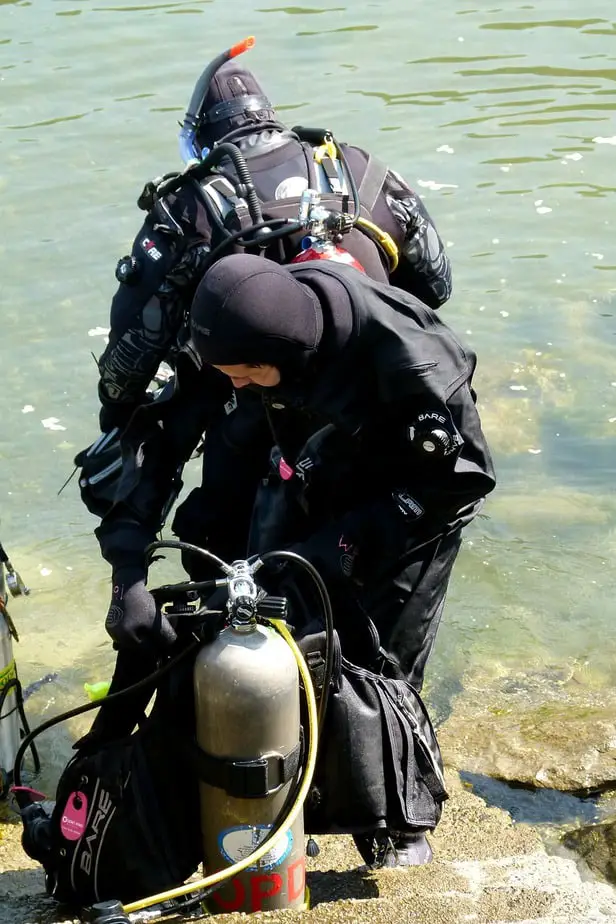
As we mentioned above, regardless of how often or little a piece of equipment was used, even if it spends most of its time sitting in storage, scuba gear should get serviced when it’s time to get serviced. All equipment manufacturers will have a recommended overhaul interval (i.e. usually annually).
If a piece of equipment is due for service but the seller hasn’t done so, then bring that up during your negotiations. Also, consider if the brand can be locally serviced or if you have to ship it out. Take all of these costs into account so you can (rightfully) haggle a better price from the seller.
For something as critical as a regulator, you should get it serviced immediately after buying it. Remember, this is life-support equipment. You cannot risk it failing on you when you’re a hundred feet underwater! Consider even doing a test dive in a pool when using used gear for the first time.
Scuba tanks last a long time
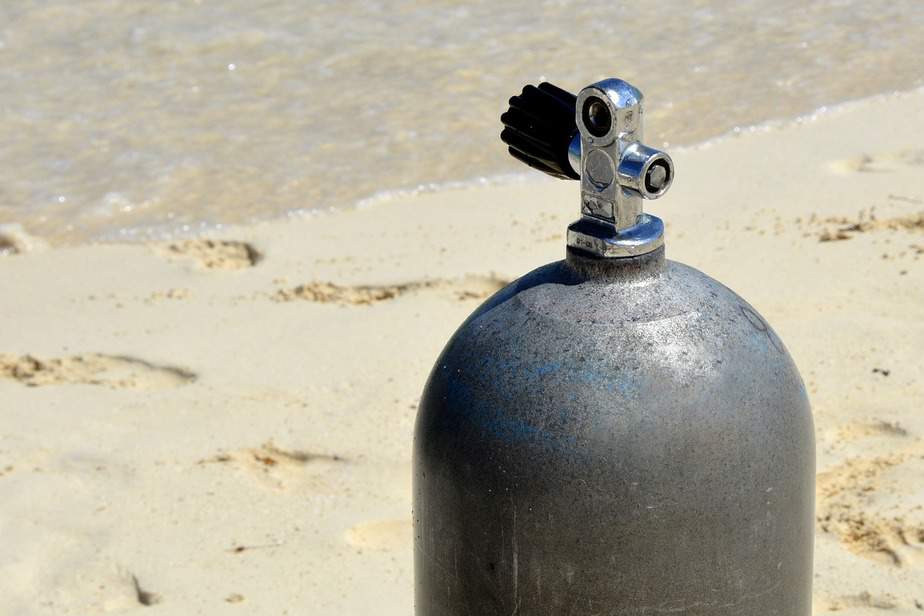
Scuba cylinders are arguably one of the best bang for the buck scuba equipment you can get because they last for decades. Assuming a tank was stored and serviced properly, it can basically be used indefinitely.
That said, some cylinders are known to have manufacturing defects, such as the infamous Luxfer aluminum 6351 tanks which are known to crack under pressure.
Despite the potential to be used for decades, not all tanks last that long. If not properly stored and maintained, scuba tanks can easily get corroded or dented, and this will cause it to fail the visual inspection, if not the hydrostatic pressure test.
Just like you would with a regulator, it’s highly recommended that you get the tank tested before using it when buying used. As a buyer, note that it’s very possible that a tank will fail the two aforementioned tests, which means there is a possibility you’ll have bought a dud and wasted even more money on tests.

